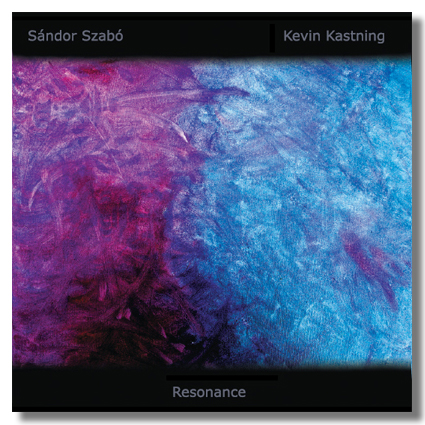


The recording of Resonance
The setting:
Resonance was recorded at Studio Traumwald in northern
Massachusetts
on an overcast, gray and chilly New England spring day. The live room at
Studio Traumwald consists of an 11-foot peaked ceiling, stone and barn wood
asymmetrical walls, and thick carpeting. It makes for a beautiful
sounding acoustical space. The element of the silence and stillness of the New England countryside makes for a wonderful
and inspirational recording environment.
The technical: The recording process was very
clean and direct; both figuratively and literally. Each of us was close-mic'ed
using a stereo pair of microphones. There was also a matched stereo pair of
overheads. This provides for a fuller and wider stereo image, but
without losing the individual placement (left vs. right channels) of each
instrument. The microphones which were used
are as follows.
Microtech Gefell M-930 (my primary mic)
Microtech Gefell M-295 (my secondary mic)
Neumann TLM-103 (Sandor's primary mic)
Neumann KM-184 (Sandor's secondary mic)
AKG 414-XLII (matched stereo pair as overheads)
 Here
is a
track sheet from the recording sessions. A purist approach was utilized at every step of the recording
process. All microphones were routed through very pure
microphone preamps: a
Millennia HV-3D. These preamps were selected for
their pristine, pure and
uncolored amplification; as well as massive headroom and an exceedingly low
noise floor. All studio cabling is Mogami Neglex. From the six
Millennia mic
preamps, the lines were routed into a 24-bit/96k
16-track digital recorder. No EQ, compression or limiting was used; either in the live
recordings or during mixdown. Not using compression or limiting means that the
overall volume level of the final CD will be somewhat lower than most other
CDs. However, the beauty of no compression is that the full and natural dynamic
range is captured. No
equalization was used; either during the live recording or during the mixing or
mastering.
No studio tricks; no overdubs. What the listener hears on the CD is
exactly how the compositions were performed in the recording studio.
The only effect which was used was the addition of
Bricasti M7 digital reverb
during the final mix.
Here
is a
track sheet from the recording sessions. A purist approach was utilized at every step of the recording
process. All microphones were routed through very pure
microphone preamps: a
Millennia HV-3D. These preamps were selected for
their pristine, pure and
uncolored amplification; as well as massive headroom and an exceedingly low
noise floor. All studio cabling is Mogami Neglex. From the six
Millennia mic
preamps, the lines were routed into a 24-bit/96k
16-track digital recorder. No EQ, compression or limiting was used; either in the live
recordings or during mixdown. Not using compression or limiting means that the
overall volume level of the final CD will be somewhat lower than most other
CDs. However, the beauty of no compression is that the full and natural dynamic
range is captured. No
equalization was used; either during the live recording or during the mixing or
mastering.
No studio tricks; no overdubs. What the listener hears on the CD is
exactly how the compositions were performed in the recording studio.
The only effect which was used was the addition of
Bricasti M7 digital reverb
during the final mix.
From Studio Traumwald's lush but precise sounding live room, to the 24-bit/96k digital recording process to the final step of cutting the single-speed glass master, the end result is a very beautifully recorded, audiophile-grade CD.